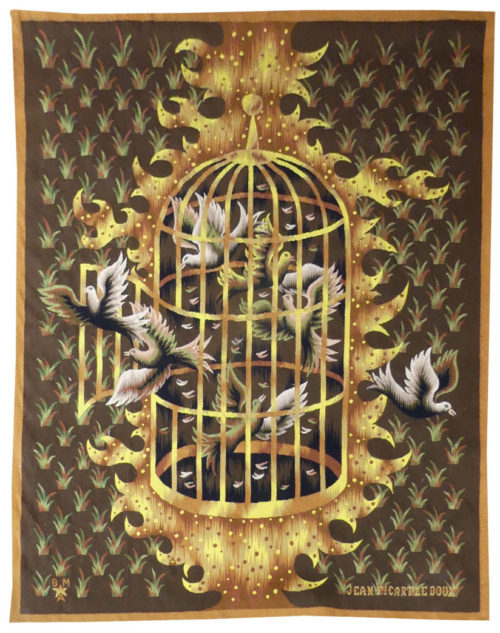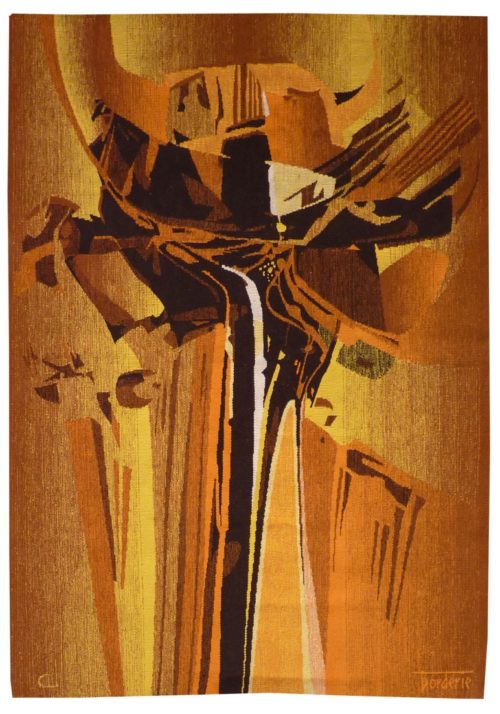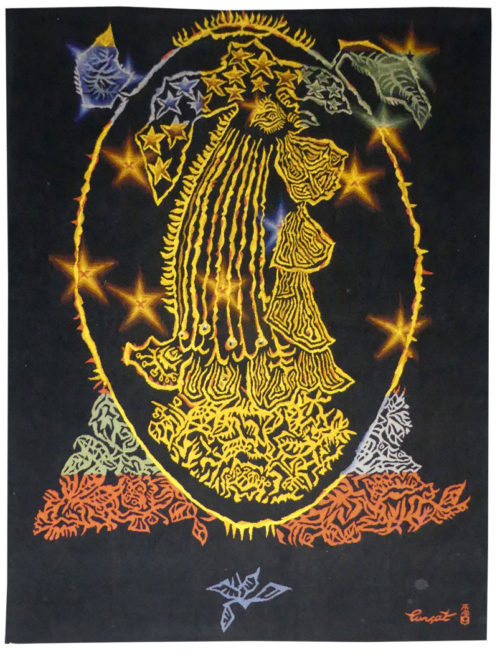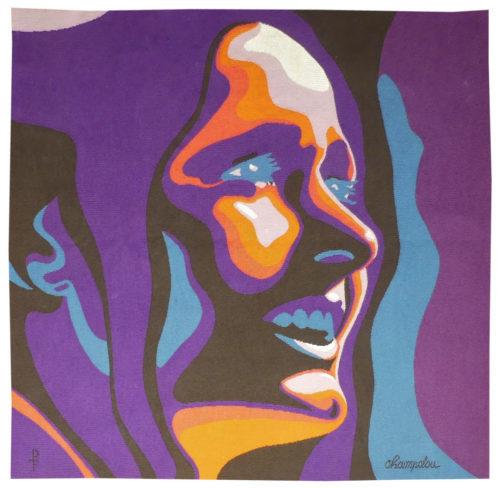La cage ouverte (the open cage)
Tapisserie d’Aubusson tissée par l’atelier Berthaut.
Avec son bolduc signé de l'artiste.
1953.
Jean Picart le Doux is one of the foremost figures in the renaissance of the art of tapestry. His earliest contributions to the field date back to 1943 when he designed cartoons for the passenger ship “la Marseillaise”. A close associate of Lurçat, whose theories he would adopt (limited palette, numbered cartoons...), he was a founding member of the A.P.C.T. (Association des Peintres-cartonniers de Tapisserie), and soon after, a teacher at the Ecole Nationale Supérieure des Arts Décoratifs. The state gave him several commissions most of them at the Aubusson workshop, and some at the Gobelins : the most spectacular of these being for the University of Caen, the Theatre in Le Mans, the passenger ship France or the Prefecture of the Creuse département ... In as much as Picart le Doux’s aesthetic is close to that of Lurçat, so also is his insipiration and his subject matter, although in a register which is more decorative than symbolic, where he brings together heavenly bodies (the sun, the moon, the stars...), the elements, nature (wheat, vines, fish, birds...), man, literary quotation ...
Birds are a recurrent motif in the artist’s work in the first half of the 1950’s (“la cage ouverte” the open cage, one of the most successful works of this artist, dates from 1953, Picart le Doux here comes back to the same cartoon but with a few minimal changes), as well as the tongues of flame punctuating the edges of the cage. Added to this is the limited colour scheme which is not a little redolent of traditional foliage.
Bibliography :
Maurice Bruzeau, Jean Picart le Doux, Murs de soleil, Editions Cercle d’art, 1972
Exhibition catalogue Jean Picart le Doux, Musée de la Poste, 1980





